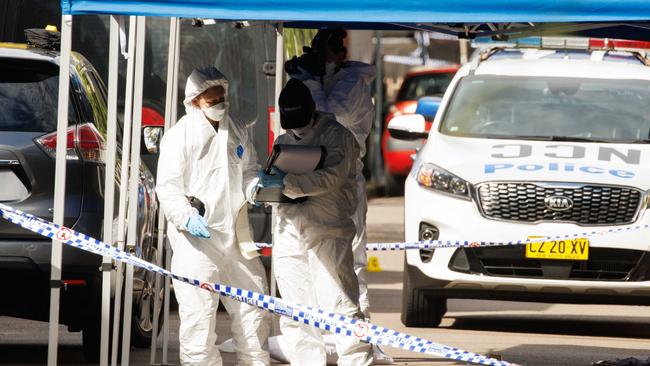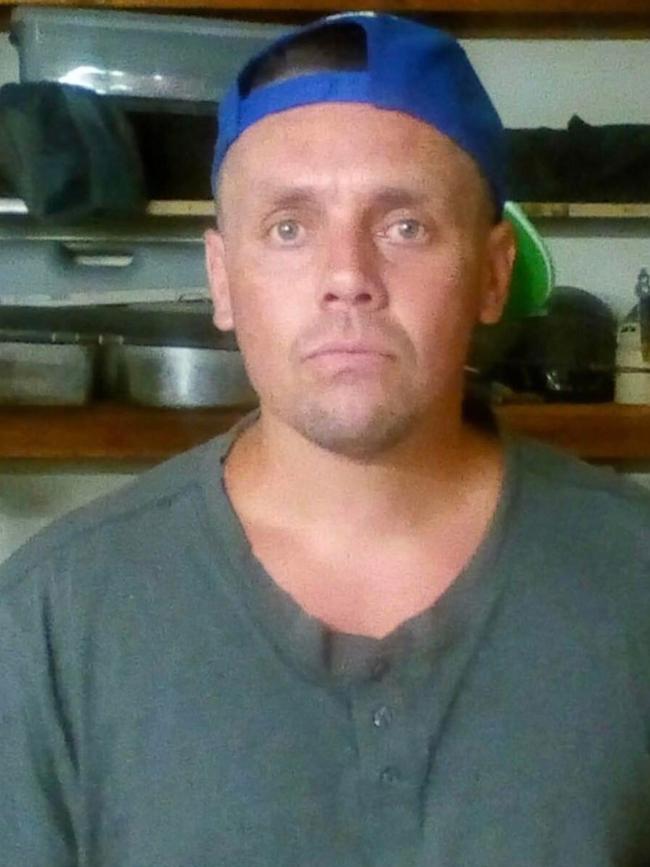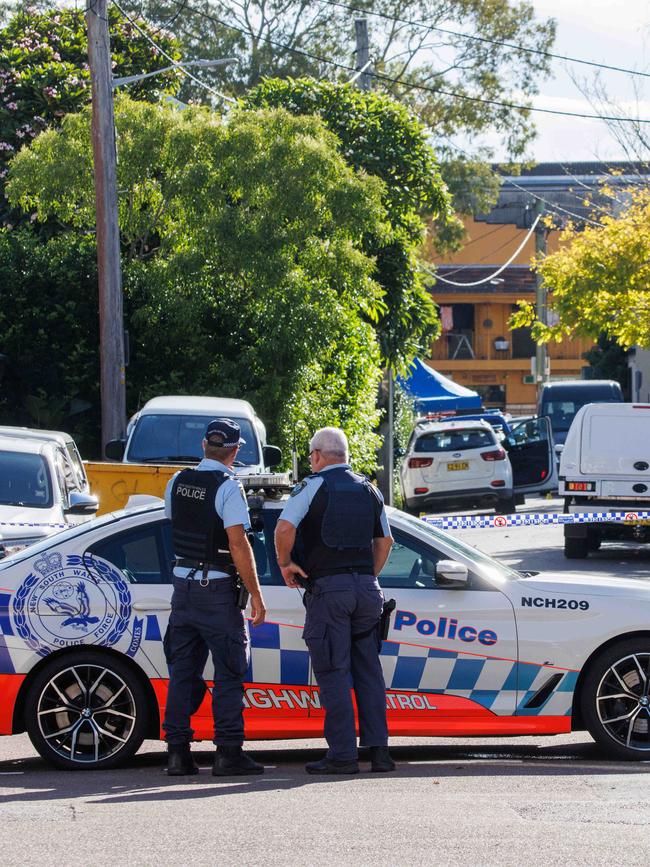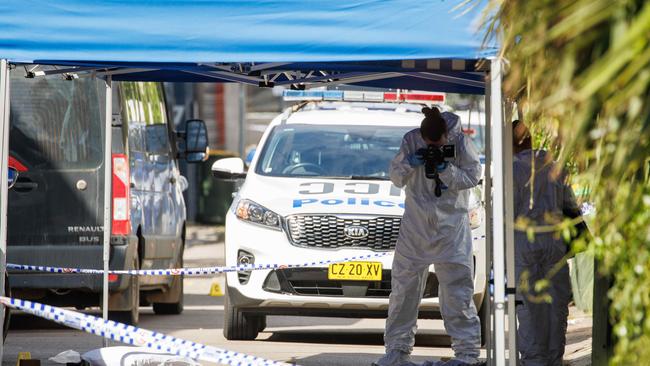Day 2 Warren Simon Coronial Inquest: Police officers involved give evidence
Two police officers involved in a violent attack which saw one stabbed and a man fatally shot outside a Newcastle unit have given evidence at a coronial inquest. WARNING: A deceased Indigenous person is referenced in this story.

Newcastle
Don't miss out on the headlines from Newcastle. Followed categories will be added to My News.
A court has heard two police officers made an on-the-spot decision not to handcuff a man after he was placed under arrest because he was being “compliant” and “calm” before chaotic scenes erupted which saw one officer stabbed and the man fatally shot.
WARNING: A deceased Indigenous person is referenced in this story.
On Wednesday it was the second day of the coronial inquest at Newcastle Coroner’s Court before Deputy State Coroner Kasey Pearce into the death of First Nations man Warren Matthew Simon.
The three-day hearing is looking at whether there was “reasonable” and “appropriate” use of police force before and after the 38-year-old from Toronto was shot three times on April 7 last year at a Wickham unit he was using as a squat.
Harrowing police body-worn video was shown during the opening day of the inquest and captured Mr Simon – known as ‘Wazza’ – violently unleash on the female and male officers, both aged in their 20s and who were routinely investigating a suspected burglary a day earlier.


It captured Mr Simon calmly open the door to the Bishopsgate St address and chat to officers and, as he collected the rest of his belongings, then removed a 12cm kitchen knife from his pocket and swung it at the male officer, slicing his armpit.
Mr Simon fled outside with the female officer giving chase before he turned and lunged at her, only to be saved by her colleague who fired three fatal shots.
The female constable – the more senior of the two officers – confirmed they were following up on a reported break and enter at Cooks Hill home where a number of items had been stolen and were sent to the Wickham unit just after 8am.
The officer told the court they spoke to two victims who informed them they had earlier knocked on a vacant unit after tracking stolen airpods to where a man was sleeping inside.

When the two officers arrived on the doorstep, they were confronted by Mr Simon wearing clothes which matched those reported missing, while a stolen TV was thought to be inside and a car also reported stolen was parked nearby.
The court heard the officer believed she saw “red writing” and a photo matching Mr Simon come up on their police communication device but that she initially ignored it.
“Should you have read them?” counsel assisting the Coroner Tracey Stevens asked.
“Yes,” the officer replied but added, “it wasn’t hugely important to me at the time, a lot of people have warnings”.
Aboriginal Legal Service solicitor Emma Parker, acting on behalf of Mr Simon’s family, quizzed the officer on her decision made that day and his behaviour.
“I would say nervous. Normal when someone is interacting with a police officer,” she said giving evidence.
Ms Parker also asked if she had read that warning initially whether it would have changed her mind not to handcuff him on the spot.
“No,” she replied citing Mr Simon’s calm demeanour at the time.
The officer also defended her decision to chase after the 38-year-old and said at the time she had serious concerns for the safety of the general public.

“I don’t think an appropriate response from me was to disengage and assist in his escape and (have) serious injury of other parties,” she said.
Counsel for the Commissioner of Police, Anders Mykkeltvedt, confirmed with the officer that it was important to address every situation on its merit and there was no “particular response” in a frantic situation like this.
He also asked why she restrained him when he was on the ground to which she replied, “he was still grabbing for the knife”.
She also confirmed she did not know where the bullets had been fired and only noticed Mr Simon had an injury to his finger.
The inquest continued with the male officer telling the court that the reason he pulled the trigger to shoot Mr Simon was because he believed “he looked like he was going to kill her”, referring to his partner.
“It was very quick,” he told the inquest.
He gave evidence that Mr Simon did not show any initial signs of aggression when they were speaking to him and it was the right decision not to handcuff the 38-year-old before walking with him inside the unit.
“He wasn’t aggressive, he was compliant,” he told the court.
“His demeanour was fine, he was calm. I was happy with him to walk in.”
But he admitted there was “always a risk” when arresting anyone on the job.
Submissions will be heard on Thursday for the last day of the inquest.





